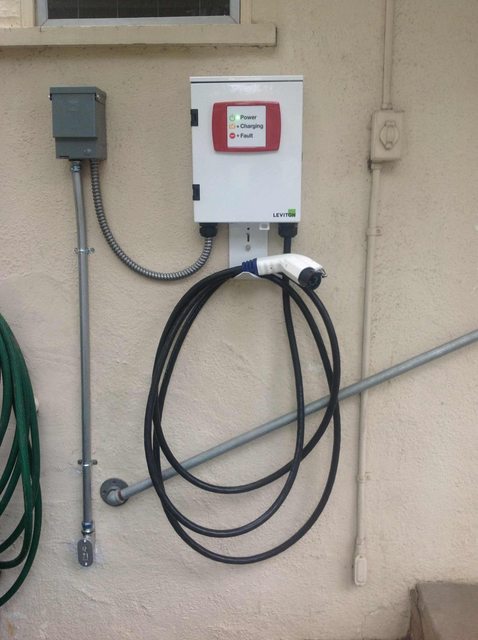Yes you are right !
The reason I skipped the $80 mounting plate is because it allows removal "without tools" and I did not want my hooligan neighbor kids removing it from the side of my house and taking it away.
In a bizarre statement it was explained to me that if tools were required to remove it, that violated the NEC (National Electric Code) because cord-and-plug devices are only allowed to be "temporary." Another bureaucratic snafu.
You can do it, it works just fine. Even
without the "kit" you can bolt it easily to the side of your house with two bolts, without opening the unit which "voids the warranty."
Personally, I did not care to open it and did not have to. However in another bit of commercial ugliness, they provide
two tamper-evident seals with the charger:
If an electrician converts the plug-in ("temporary") unit to a permanent, hard-wired unit, he cuts the original seal and opens the box to wire it up. He then snaps on the second seal, which is of a different color, locking you out once again.
My choice was to avoid all this silly nonsense by simply installing an outdoor-rated outlet and plugging it into that, then bolting it to the house.
They leave you with three choices: Breaking the law, losing your warranty, or buying their $80 kit.
I chose the first, it works great and I am very pleased with it. 100% satisfaction so far.
A word to the wise, if you can, install in an area without grass. The lawnmower hit the cord one time and nicked the wire a little bit, even though the cord was hanging up on the (poorly-designed) cord hanger, which is truly minimalist.
Otherwise, a fine product. As an added bonus, it very much resembles a burglar-alarm panel, with green LED shining all night long to ward off would-be attackers. This way, it lends a somewhat theft-deterrent property to the whole house.





